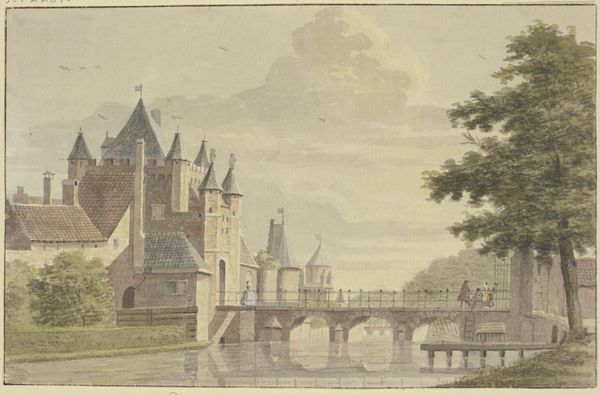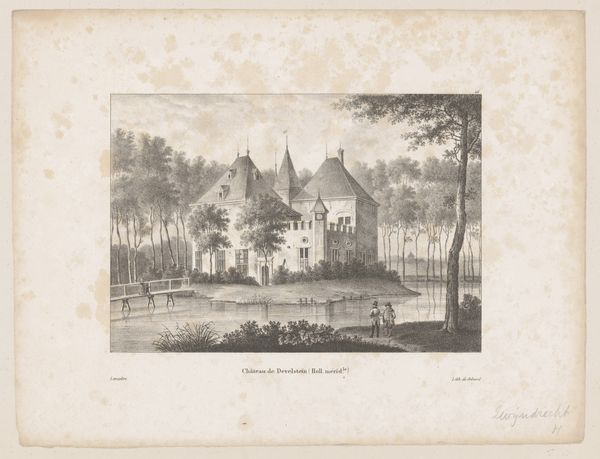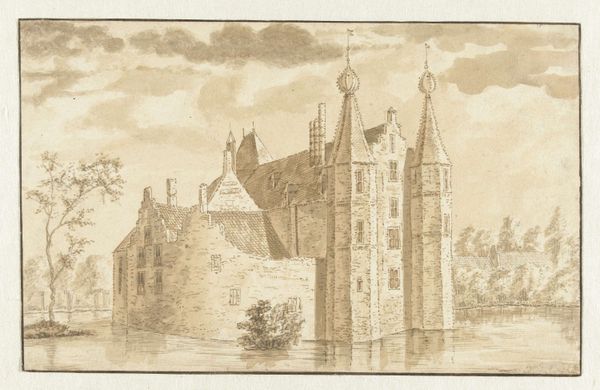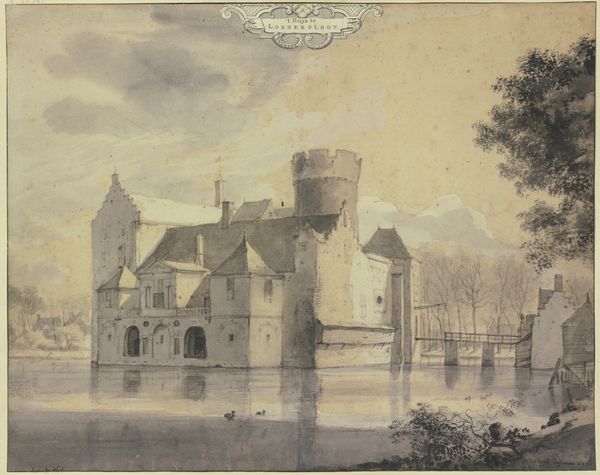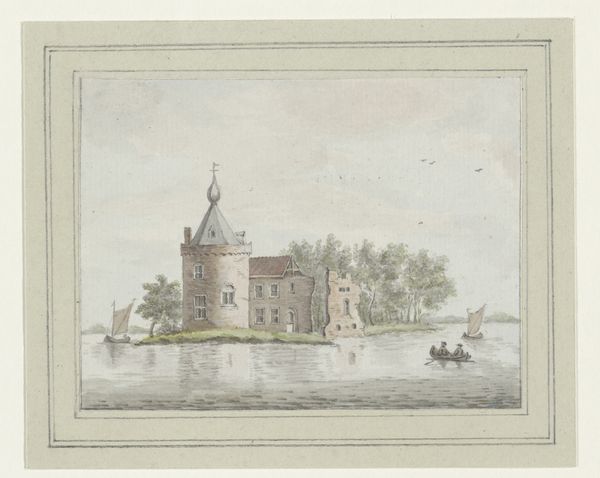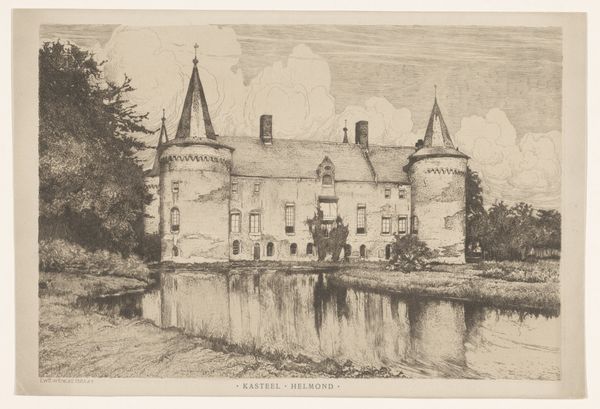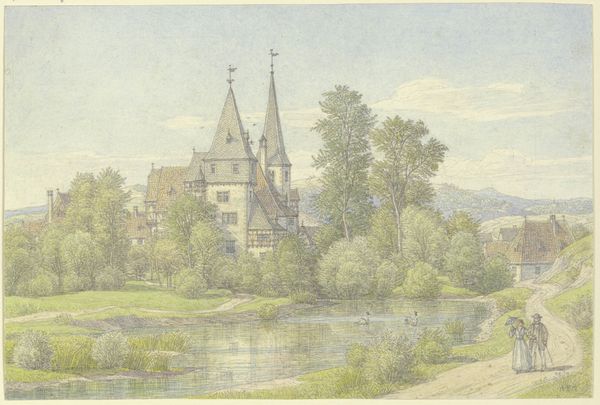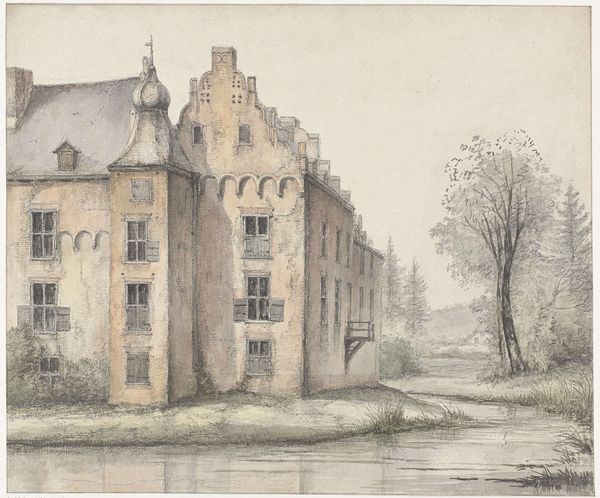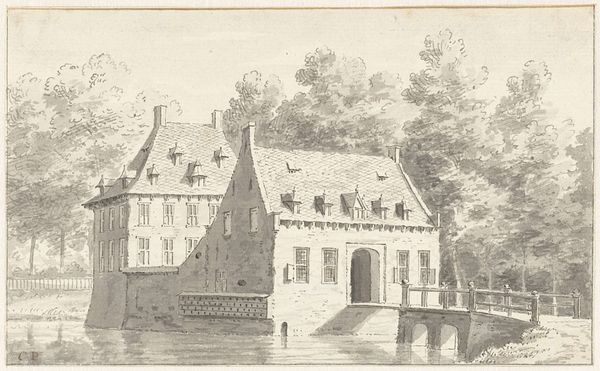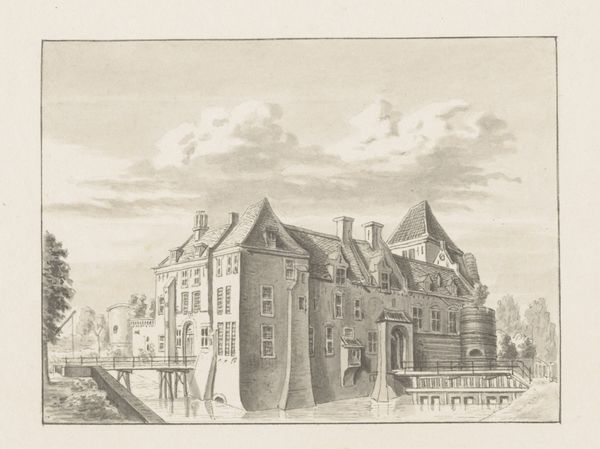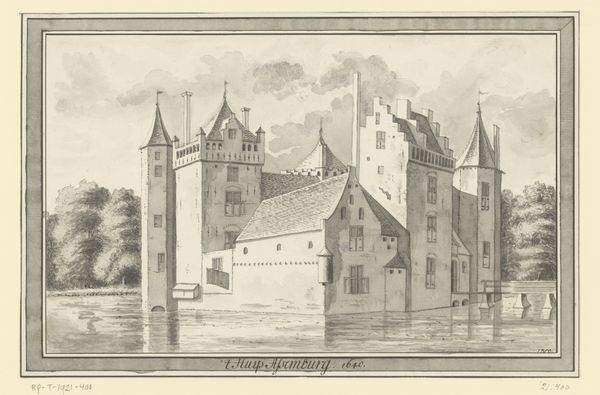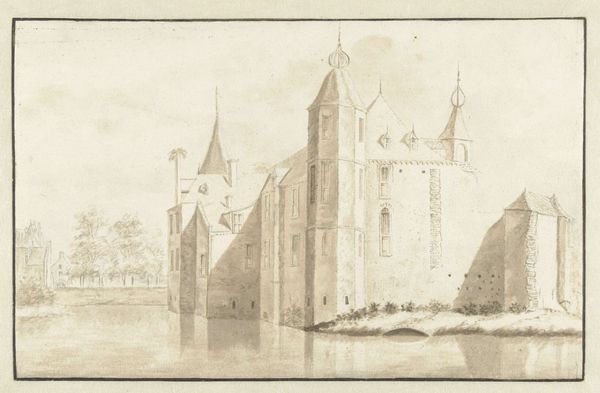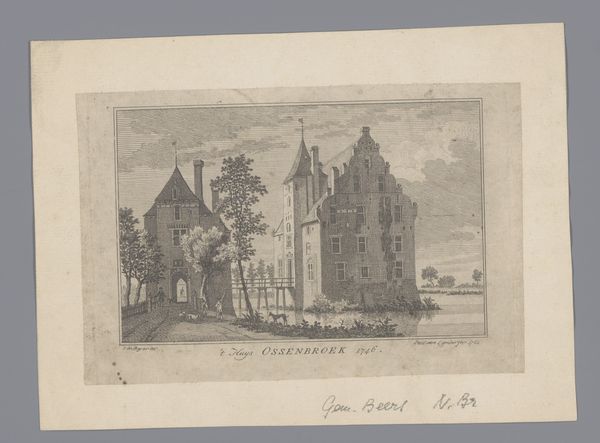
Dimensions: height 295 mm, width 453 mm
Copyright: Rijks Museum: Open Domain
Curator: Isn't there something eternally captivating about old castles? This one is "Kasteel Popkensburg op Walcheren," a watercolor crafted in 1851 by F. Bourdrez. What are your immediate thoughts? Editor: Melancholy, perhaps? A quiet sort of grandeur, reflecting in still waters. It almost feels like a dream fading at the edges. Curator: I completely get that. Bourdrez captures a scene in the Romantic tradition, doesn't he? Look at the castle partially submerged, like a forgotten myth rising from the water. The architecture itself becomes this potent symbol. Castles, you know, are often stand-ins for the societal powers that built them. And in the 19th century, artists like Bourdrez found beauty in depicting ruins or scenes that hinted at the passage of time and power. Editor: Definitely. The way the light filters through feels less about historical accuracy and more about conveying a certain… atmosphere. I am curious about its display setting; its presentation in this frame—makes one ponder about it as object d'art versus cultural artifact, its marketability during that era and maybe Bourdrez' own aspirations. Did he envision his landscapes adorning bourgeois parlors or serving as a statement on the eroding aristocracy? Curator: That's such a rich point. Watercolor as a medium at the time wasn't exactly seen as high art, unlike oil painting. Bourdrez might have used it for portability and accessibility. It also gave the work this delicate, ephemeral feel, that suited Romantic themes quite nicely. Perhaps this subtlety afforded more room for that commentary you astutely recognized! Editor: Indeed, the light and delicacy underscore the scene's transience! I mean look closely— isn’t there a feeling the castle could, at any moment, disappear entirely beneath the surface? What strikes me most are these socio-political undercurrents: Bourdrez isn't merely depicting architecture; he's inviting us to consider society's complex dance of ambition, legacy and decline. Curator: Absolutely. There’s a whole subtle dialogue happening, I think, between solidity and fluidity. And now, considering it all, what initially felt melancholic starts feeling profound. Editor: Precisely! Thank you, now I feel much more confident about it.
Comments
No comments
Be the first to comment and join the conversation on the ultimate creative platform.
